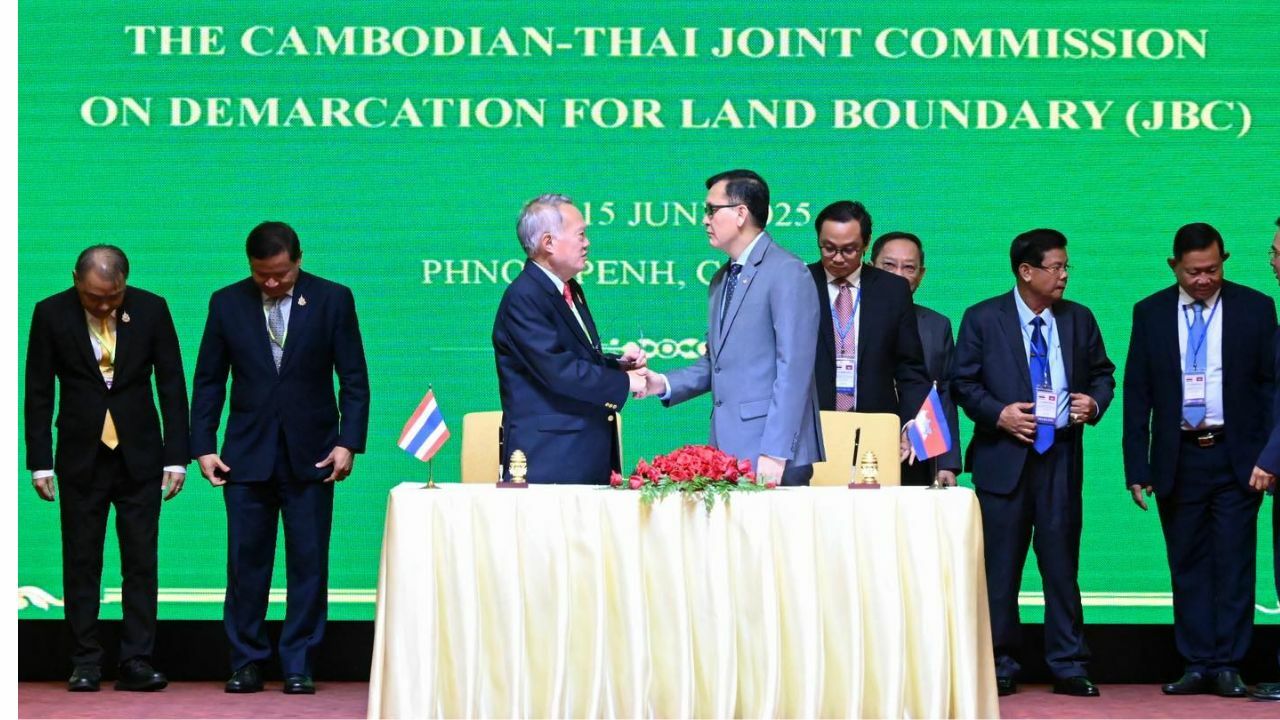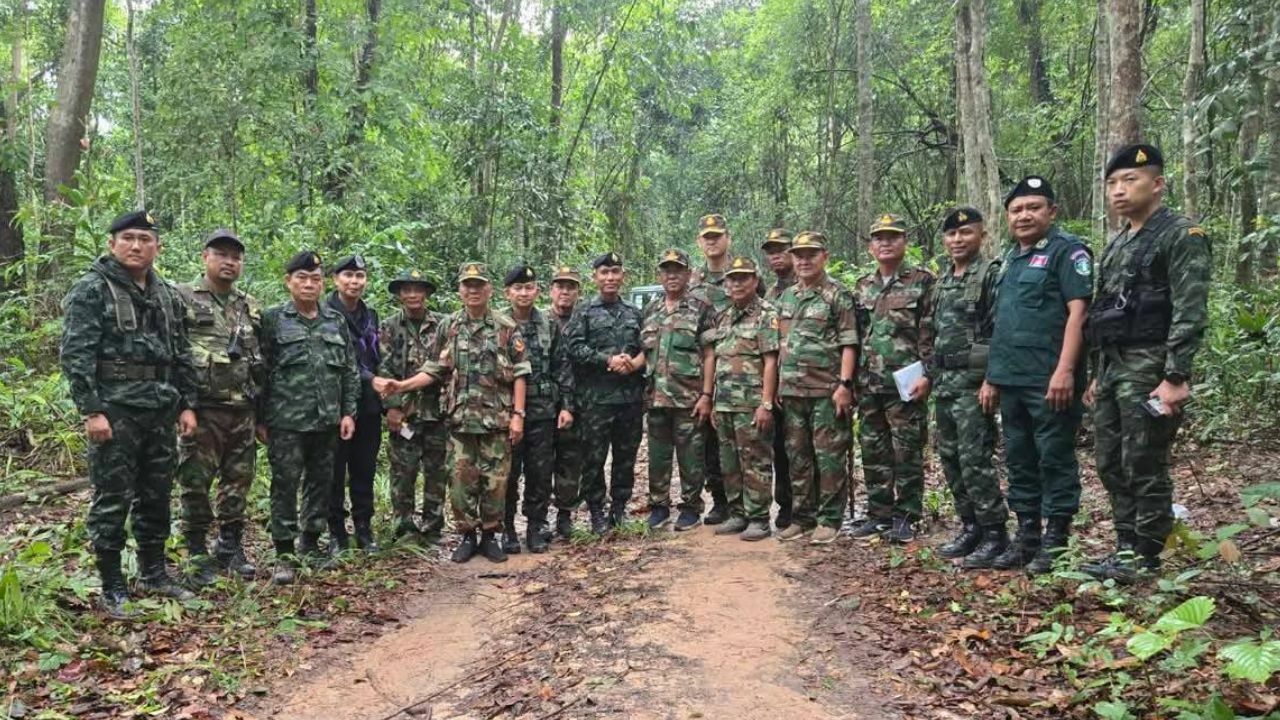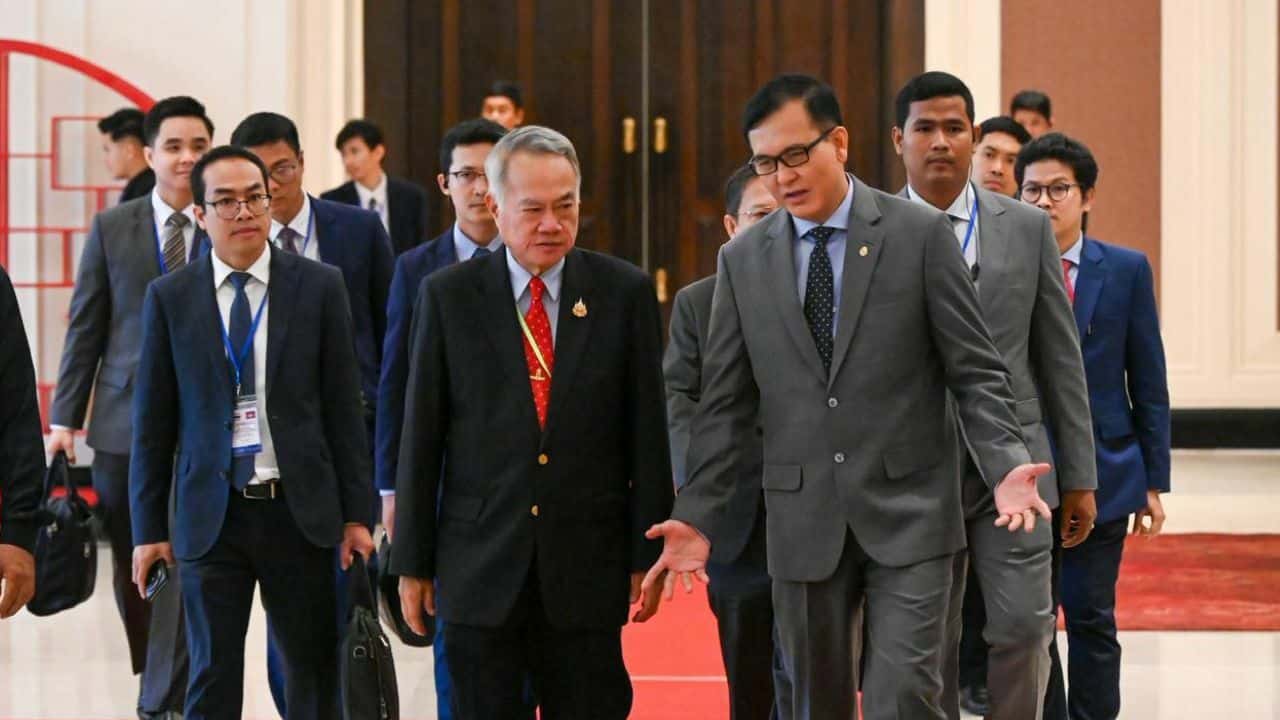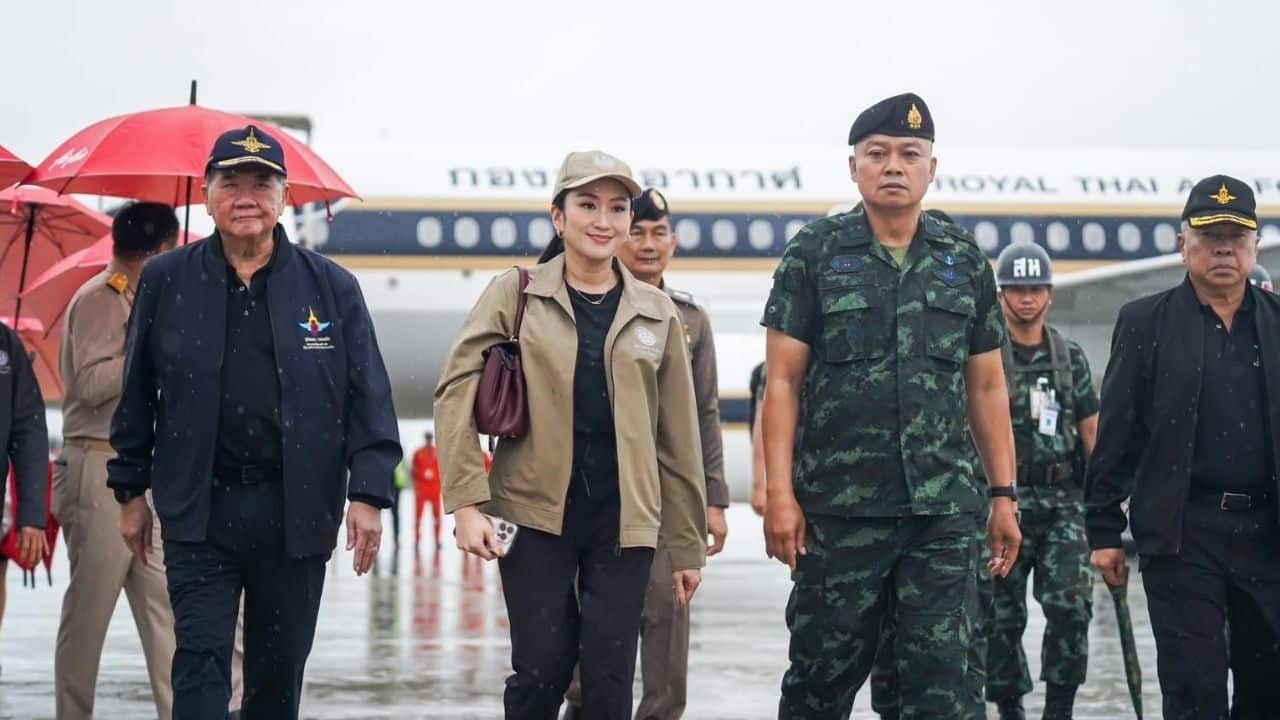

Thailand and Cambodia made conflicting announcements following the Joint Boundary Commission (JBC) meeting held in Phnom Penh, Cambodia, yesterday, June 15.
Tensions between the two nations flared on May 28 in the disputed border area known as Chon Bok in Thailand and the Emerald Triangle in Cambodia. Military forces from both sides briefly clashed, with the confrontation lasting around half an hour. The area has long been contested due to historical disputes over its ownership.
Thailand maintains that the area is within its sovereign territory, while Cambodia asserts that it holds rightful ownership, not only over the Emerald Triangle but also over three historical landmarks in Thailand’s Surin province: Prasat Ta Muean Thom, Prasat Ta Khwai, and Prasat Ta Muen Tod.
Cambodia proposed that the matter be brought before the International Court of Justice (ICJ), also known as the World Court, which had previously ruled that the Temple of Preah Vihear belongs to Cambodia.
However, according to a report by the TNN news agency, Thailand announced it would not accept the jurisdiction of the World Court. Instead, Thai officials called for a peaceful resolution through mutual respect for each nation’s sovereignty and territorial integrity, using the JBC mechanism.

The sixth meeting of the JBC took place between June 14 and 15, hosted by Cambodia. It was hoped that the dialogue would help ease rising tensions. However, several news agencies reported that Cambodia refused to discuss the dispute during the meeting and insisted it would only engage on the issue at the World Court.
Following the meeting, Cambodia’s Secretariat of the Cabinet issued a statement claiming that the Cambodian side reiterated its intention to take the dispute over the Emerald Triangle and the three historical landmarks to the World Court, and urged Thailand to accept the terms.

The statement also claimed that both parties had agreed to use a 1:200,000 scale map to determine the ownership of the disputed area. Cambodia further asserted that it resolutely rejected a map drawn by Thailand, which it said should not be used as a reference.
Shortly thereafter, the Thai government released an official response rejecting Cambodia’s claims. Thailand’s Ministry of Foreign Affairs insisted that no discussion of a 1:200,000 scale map had taken place during the meeting, nor was there any mention of submitting the case to the World Court.
Thailand reaffirmed its previous position of using a 1:50,000 scale map, a standard used internationally in similar territorial disputes.

According to the ministry, the primary focus of the meeting had been on the technical procedures for creating aerial photographic maps, which constitute the second stage of the boundary survey and marker installation by the agreed master plan.
Thailand also expressed deep disappointment at Cambodia’s refusal to cooperate through bilateral mechanisms to resolve the tension in a spirit of neighbourly goodwill.
On the morning of today, June 16, Thai Post reported that Prime Minister Paetongtarn Shinawatra called an urgent meeting with relevant government departments to discuss the JBC meeting’s outcome and determine the Thai government’s next steps.
The story Thailand and Cambodia make conflicting announcements after boundary meeting as seen on Thaiger News.
